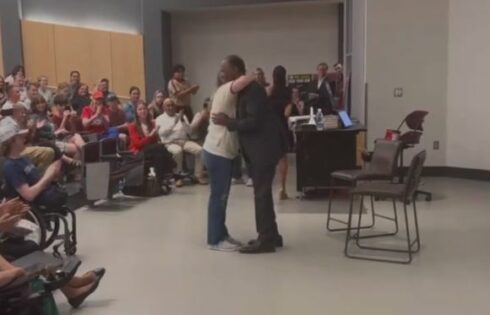Police records reveal that William and Mary’s emergency phone system is almost never used correctly.
Of 133 calls received by the William and Mary police department from emergency phones on campus between October 2009 and October 2010, only four were for actual emergencies. This is not unusual, according to William and Mary Police Chief Don Challis.
“The emergency phones are used more often for tests than for actual problems,” Challis said. “For most calls they’re used incorrectly.”
William and Mary’s distinctive blue light phones were first installed on campus in the mid 1980s, around the time when emergency phone systems were introduced as a safety standard in other colleges in the United States. Emergency phones can be found on campus alongside major paths and near most dorms.
Although there is some concern that the emergency phones have been rendered obsolete by cell phones, the phones remain a central part of the campus safety plan. Most recently, a series of nine phones were installed around the newly opened School of Education Building; emergency phones were also installed around Miller Hall when it was opened last year. Challis noted that new phones are likely to be installed alongside major construction projects for the foreseeable future.
But how are the phones actually used?
The William and Mary Police call log for the last year shows that the phones are more often used for pranks or vandalism — or simply by accident.
On February 27, for instance, the phone near Landrum was activated by an unknown individual. The dispatcher on duty heard a male voice state, “a drunk girl pushed it,” before hanging up.
On April 3, the phone near Hunt Hall was activated. The dispatcher reported that there was an “extreme language barrier,” but did manage to ascertain that the individual at the other end did not need an ambulance. The police officer sent to the scene learned from a student that the emergency phone had been activated by a “Chinese take-out guy.”
Other uses of the phones are similar. Most of the time the police officer dispatched finds the caller “gone on arrival.”
The emergency phones were used for their intended purpose only a handful of times over the last year. On one occasion, a student called from the Sunken Gardens to report that a male had fallen and was bleeding from the head. Officers were dispatched and the student was treated by medics. On another occasion, a phone was activated and the dispatcher heard female screaming in the background, but received no response. Multiple police officers were dispatched, but they found no one in the area.
In April, a female student activated a phone to report a vehicle that had passed her twice on Jamestown Road. The police officer sent to help determined that the car in question was delivering newspapers.
But although the phones are seldom used actively for real emergencies, Chief Challis suggests that they serve a useful purpose as deterrents. Their presence alongside main routes on campus may help to prevent problems from arising in the first place. The phones are also useful because they help the police to respond quickly and accurately to calls.
“One of the benefits of having these emergency phones is we know where the call is coming from,” Challis said — something that is not true of cell phones.
Mason Watson is the news editor of the Virginia Informer and a student at the College of William & Mary. He is a contributor to the Student Free Press Association.
Like The College Fix on Facebook / Follow us on Twitter




Please join the conversation about our stories on Facebook, Twitter, Instagram, Reddit, MeWe, Rumble, Gab, Minds and Gettr.